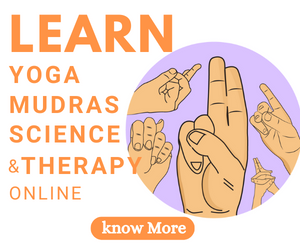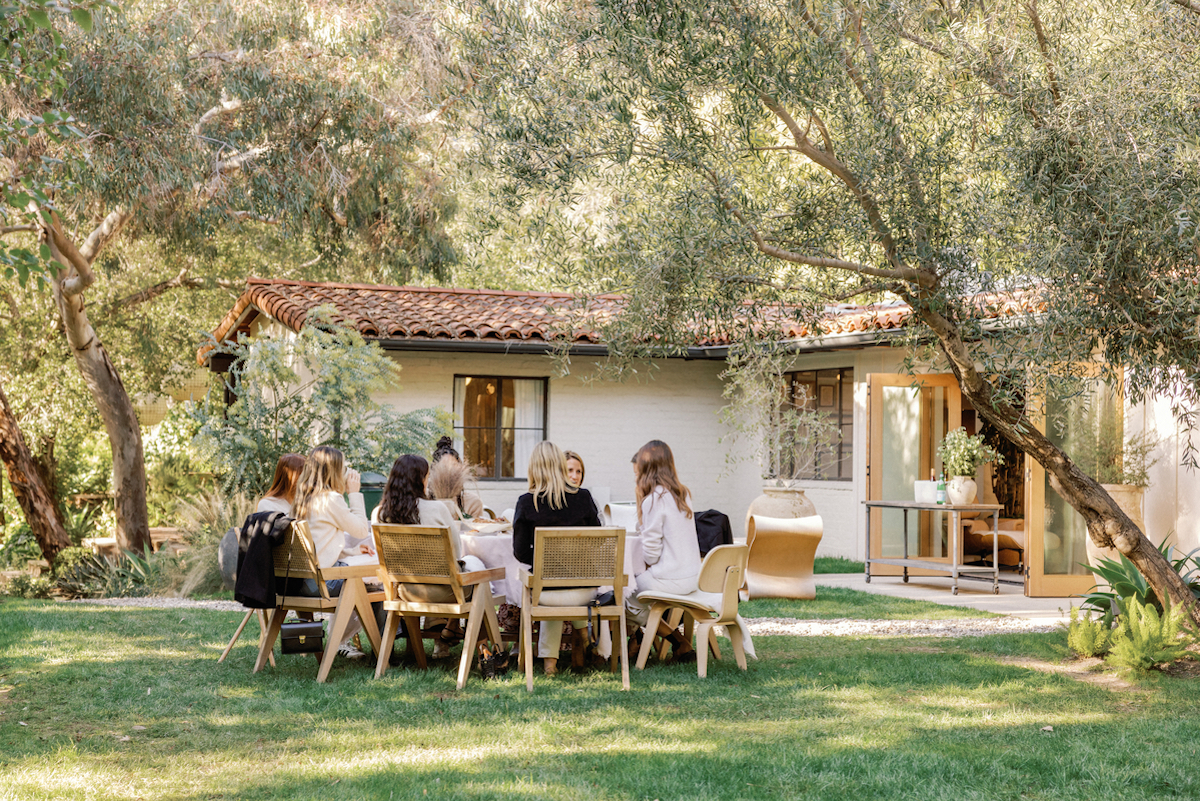What is Acro Yoga? Ultimate Guide to Practice and Benefits
Simply speaking, acro yoga combines the practices, techniques, and benefits of acrobatics and yoga. It merges the Vinyasa and Hatha yoga to produce some fun-filled poses that are not only helpful in building your muscle strength and flexibility but...
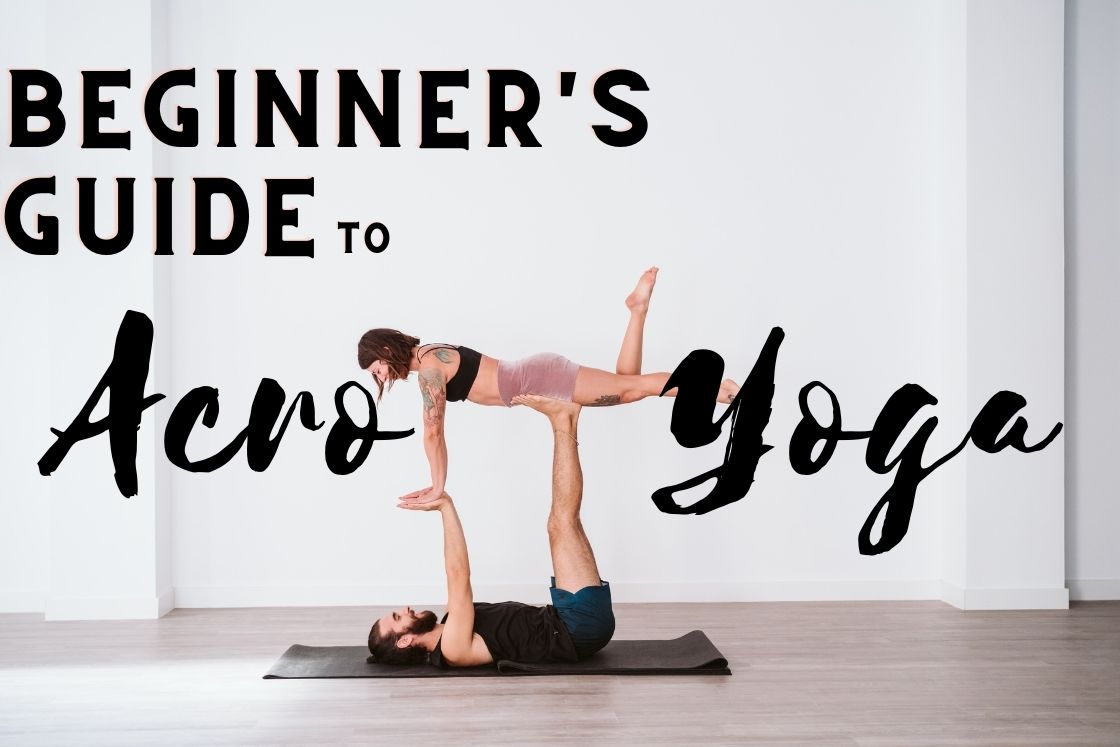
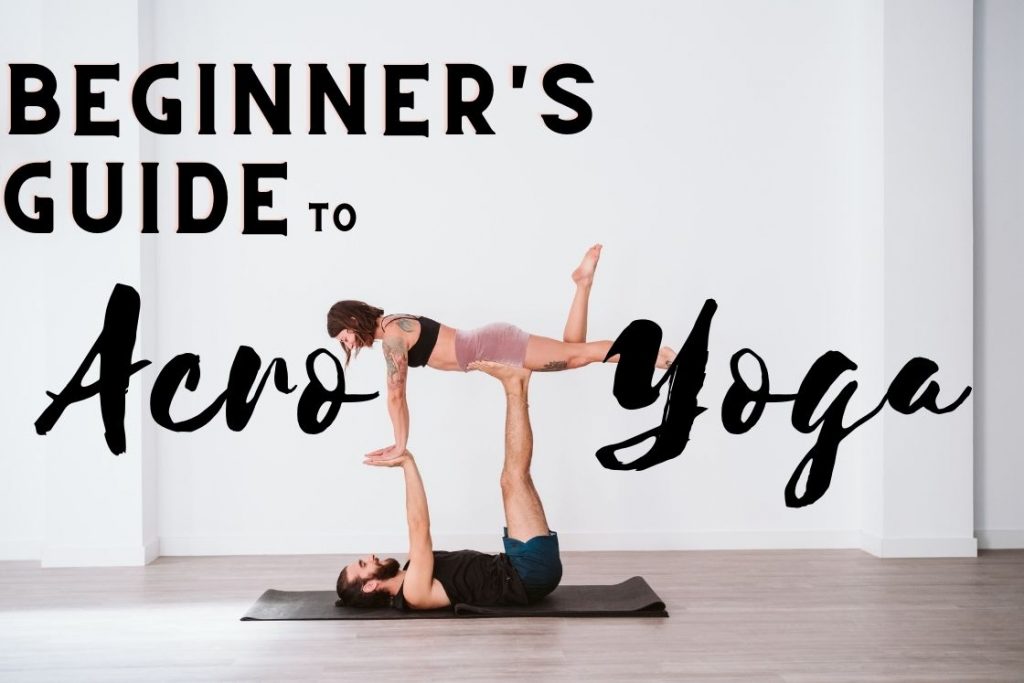
Simply speaking, acro yoga combines the practices, techniques, and benefits of acrobatics and yoga. It merges the Vinyasa and Hatha yoga to produce some fun-filled poses that are not only helpful in building your muscle strength and flexibility but also therapeutic.
Acro yoga poses performed by two people which means a lot of confidence, flexibility, strength, and balance is required to practice this yoga. It also helps build a strong relationship with your yoga partner as there is constant communication, mutual support, physical contact required to understand each others’ body movements.
This partner-based yoga engages you with your yoga buddy through movement, connection, and fun. Acro Yoga is more of a modern yoga form that has been constantly evolving since its introduction.
Origin of Acro Yoga
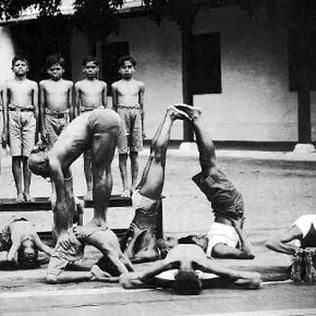
The first traces of acro yoga can be found in 1938 when the ‘father of modern yoga’, T. Krishnamacharya has seen performing a variation of backbend yoga pose with a child. However, it was just a part of his teaching methodology. At that time it was not publicized as a particular yoga style.
Several decades later, in the 1980s, while researching methods to alleviate his back pain, Benjamin Marantz discovered techniques that involved massage and inverted therapeutic techniques and named it as AcroSage.
Practising it requires at least two people but works best with three or more. In inversion poses, one person lies on the ground as a base, while another (the “flyer”) balances on their partner’s hands and feet. A third person spots the flyer and keeps everyone safe.
The many poses of AcroSage were the starting point of inversion therapy, many of its flying versions can be seen in today’s acro yoga classes.
It wasn’t until 1999 that the name AcroYoga was used. Dancers Euguen Poku and Jessie Goldberg of Canada established “Acroyoga Montreal (AYM)”. The blend of dance, acrobatics, and yoga came to be known as AcroYoga Fusion and was a hit among the audience.
The modern Acro Yoga terminology and usage was publicized by Jason Nemer and Jenny Sauer-Klein who founded AcroYoga International in 2003. Later they also developed a training program to educate the yoga teachers about Acro Yoga and safely teach to their students around the world.
Common Acro Yoga Terminology
The basics of Acro Yoga consist of 2 main roles, the base and flyer. The third component is the spotter, who is equally important but not directly active in performing Acro Yoga.
The base is the person who lies on the ground or yoga mat firmly and can be said as the foundation of the Acro Yoga pose. The engagement of their core strength along with arm and leg muscles is what keeps the magic and creativity of the practice. The base is instrumental in transferring the weight of the flyer to the floor by keeping the arms and legs bones-stacked.
The flyer is the person who is elevated by the base. The trust of the flyer on the base is extremely important when practising the poses of Acro Yoga. Though it doesn’t mean that all the work is being done by the base, the flyer also needs to find their balance and use core strength. The flyer needs to constantly communicate, verbally in the initial stages and later through body language once the trust and connection are built.
The spotter is the person who helps in “safe-landing”. Essentially, the job of the spotter is to support the base and flyer in improving the poses through suggestions and keeping them safe. They are essential during the initial stages of Acro Yoga when you are just learning the tips and tricks.
What to expect from Acro Yoga class?
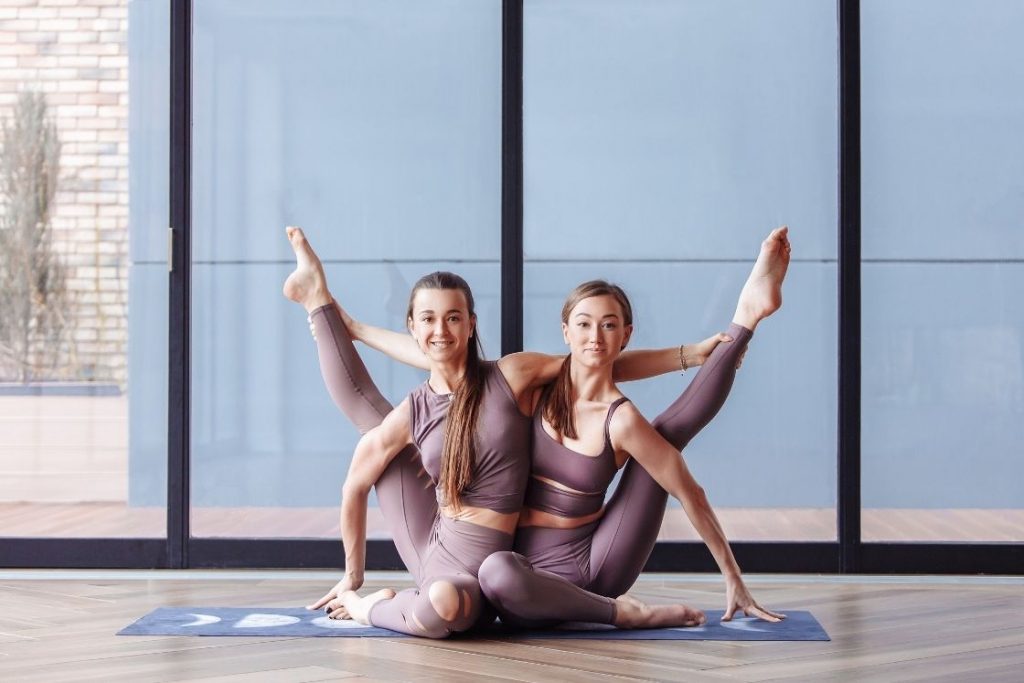
Acro Yoga is an intense yoga style that involves a lot of muscles and strengths and it is important that before getting down to performing the actual poses, you do some warm-ups. And since it involves a partner, you also need to get acquainted or break the ice between the people present in the class.
Hence, we have listed the typical way an Acro Yoga class proceeds.
The class usually begins with a circle ceremony, it is performed to open up the hearts and minds of people to each other and build the flow of communication. It is done with all the participants in a group.
Then everybody does warm-ups like stretching to prepare the muscle for all the pushes and pulls you are about to do. This is one of the most important steps as proper warm-up exercises can ease the flow of each pose and can prevent any injury.
Next, you choose a partner and practice a few stretches and asanas with them before going into the actual acro poses. This is known as partner flow. It is done to facilitate communication and build a sense of trust with them. You also do some inversions which will further enhance the level of trust.
Now is the time to perform the actual Acro Yoga poses. Based on your level of expertise, you will be guided by the instructor. There are many beginner, intermediate and advanced level acro poses you can choose from.
And once all the poses have been perfectly performed, the session ends.
Check this out: Elevate Your Practice with AcroYoga Genie Classes
Can Acro Yoga be performed at home?
If you have a trustworthy partner who is also substantially experienced in Acro Yoga, then you can definitely practice it at home.
However, since Acro Yoga involves two people who are performing acrobatic-style yoga, it is always recommended that you attend a class initially. With the help of an expert, you will be guided properly and be given suggestions for improvement.
The Acro Yoga poses require a great level of trust and open communication between the base and flyer and this can only be achieved in a professional environment.
Benefits of Acro Yoga
Just like any other yoga style, Acro Yoga also comes with a range of physical and mental benefits. Some of which are as follows:
Acro Yoga is a great tool for spinal decompression. It lengthens your spine and also helps in strengthening the back muscles. Since this is an intense form of yoga, your cardiovascular system is positively affected. You will gain flexibility, a stronger core, muscles, and joints. When you perform Acro Yoga with the same person, your relationship with them improves. And with an improved relationship comes understanding. You will easily be able to decipher body signs and achieve a higher sense of professionalism. It helps in improving your concentration as both the base and the flyer are focused on each other’s safety by being present in the moment. Through Acro Yoga, you will get trained to enhance your self-control in adverse situations and take quick decisions without any rigidity as you have your and your partner’s safety in mind constantly. You will learn to completely surrender yourself as you learn to give and take in equal proportions. It is also a fun activity hence will boost the secretion of happy hormones, thus, acting as a mood-booster. When you’re performing inverted poses, it helps in improving the blood and oxygen circulation to your brain.Tips to Practice Acro Yoga Successfully
It is due to substantial attraction towards the fluidity and dance-like motions that has probably led you to pursue Acro Yoga. We have listed a few tips that will get you to perform yoga in a safe way.
The first and obvious step is to find an Acro Yoga group. Once you connect with the community, you will be able to establish a relationship with the people who will constantly motivate you and provide you with invaluable experience and support. Just as trust between a base and a flyer is important, trust in your spotter is also essential. They will be your guide and motivator throughout the duration of the class and you have to trust in them to keep you safe and teach you well. Even if you have previous knowledge in acrobatics or yoga, you have to stay humble and start from scratch. Build the courage to unlearn everything and learn from your instructor. Do not skip any warm-up sessions as they are essential in preventing any form of cramps or muscle injury during Acro Yoga practice. Some stretches and Sun Salutation are extremely effective. Have constant communication with your base and spotter at all times. Communication during the transition of poses, your comfort level, feelings regarding a pose, or intention behind a pose. Keep communicating! Keep taking breaks to keep a healthy pace in the initial stages and switch roles to experience both sides of the roles. Do not hurry in learning everything in a short time. Build a strong foundation of your basics and a strong communication level with your yoga partner. Investing in honest self-assessment will take you a long way. Be honest with your feelings towards the yoga poses or whether you have learned something new in the session. If you’re the base, you should not arch your backs to get a good hamstring and lower back stretch. You can also use a folded mat or a blanket for additional support. If you’re the flyer, you should be cautious of not making any sudden movements. They should find a balance and their center of gravity before making any movements.Contraindications
People with the following conditions should avoid Acro yoga style.
high blood pressure, recent surgery or injury, vertigo, joint problems, Skin related problems Open woundsPregnant ladies should also avoid it since it may cause discomfort to the abdomen.
5 Best Beginner Acro Yoga Poses
1. Stacked Plank Pose
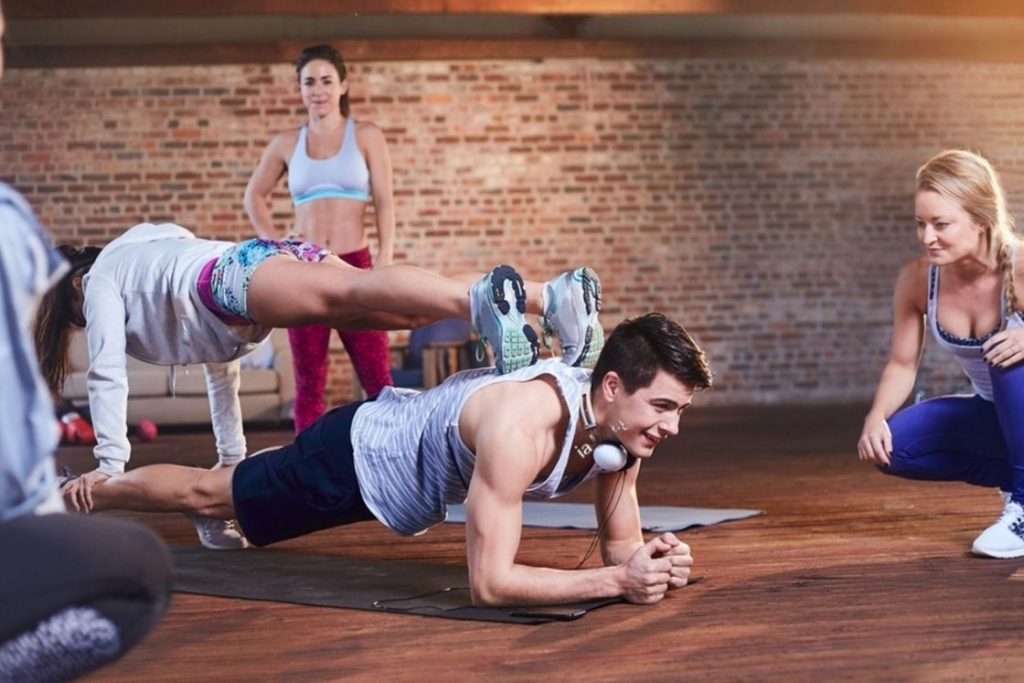 Image: shutterstock
Image: shutterstockIt is one of the introductory poses of Acro Yoga. It helps in building the core and arms muscles of the base and the flyer.
How to Do it?
The base should come in the standard plank position – shoulder stacked over the wrists, arms straight and core engaged. To distribute the weight of their arms, their palms should be firmly placed on the ground and fingers should be spread.
Now the flyer will gradually grab the ankles or calves of the base. Slowly, the flyer will place one foot on one shoulder and do the same with the other. They can also tuck their toes on the base’s shoulder blades.
2. Fish on the rocks Pose
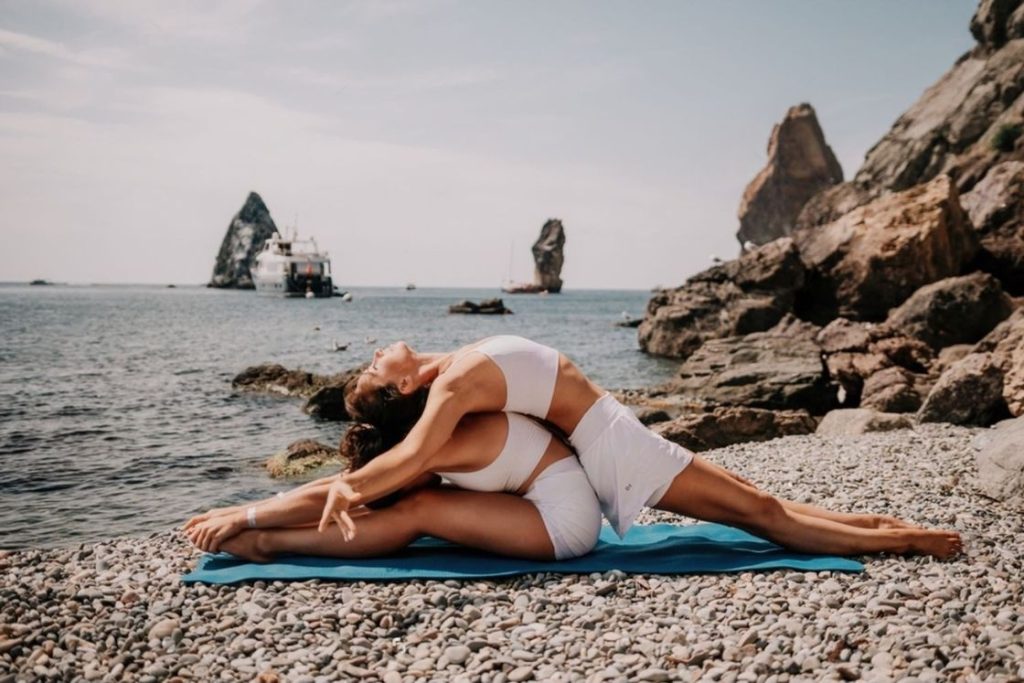 Image: shutterstock
Image: shutterstockThis restorative Acro Yoga pose is a great hip opener for the base and the flyer. It also helps in stretching the back for the base and a chest opener for the flyer.
How to Do it?
The base should come to the Child’s pose, with their hands stretched out in front of them. Their knees are outwards and their forehead is touching the ground.
The flyer completely lies on their back on top of the base, with a nice arch and stretch to their back. Here the flyer can stretch their legs and let the hands spread either to the side or towards the base’s hands to completely surrender to the pose.
3. Partner Forward Fold Pose
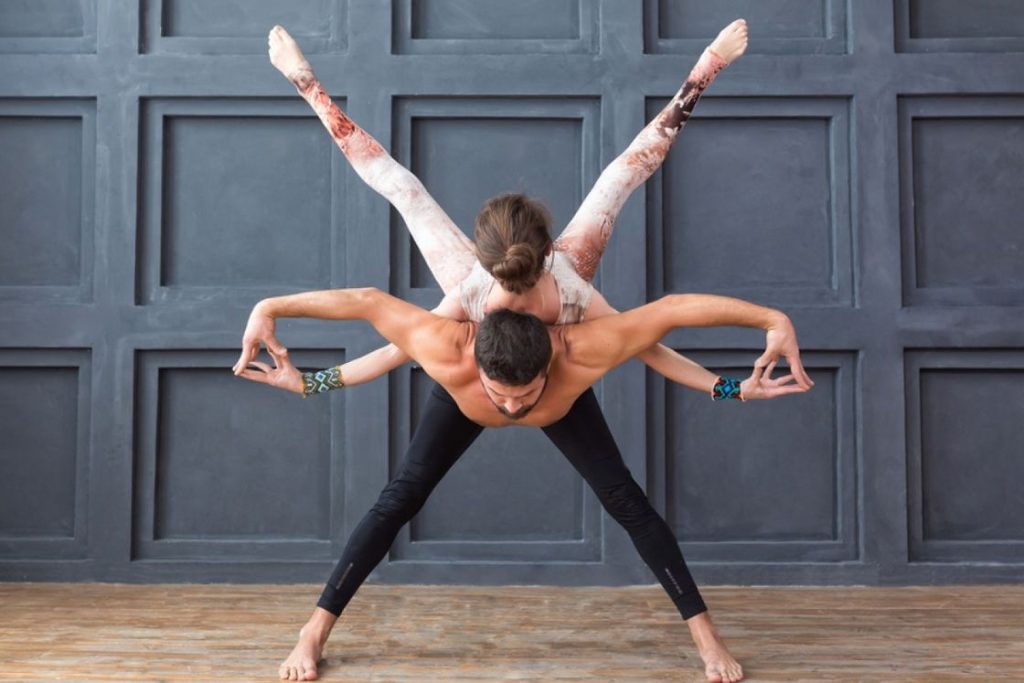 Image: shutterstock
Image: shutterstockYou must have often seen athletes or a few sports people performing stretches by picking up their partners on their backs. This pose is a fun way to deeply stretch the back and hamstrings of each other.
How to Do it?
The base and the flyer need to stand with their backs facing each other. Their legs should be spread hip-width apart and their elbows hooked, base’s elbow below the flyer.
Keeping the back straight, the base will start bending forward, bringing the flyer up with them. The base will stop bending when the upper body is parallel to the ground. The flyer has the option of bending their knees to their chest, straightening the legs towards the sky, or spreading them wide in a straddle stretch.
4. Front Plank Pose
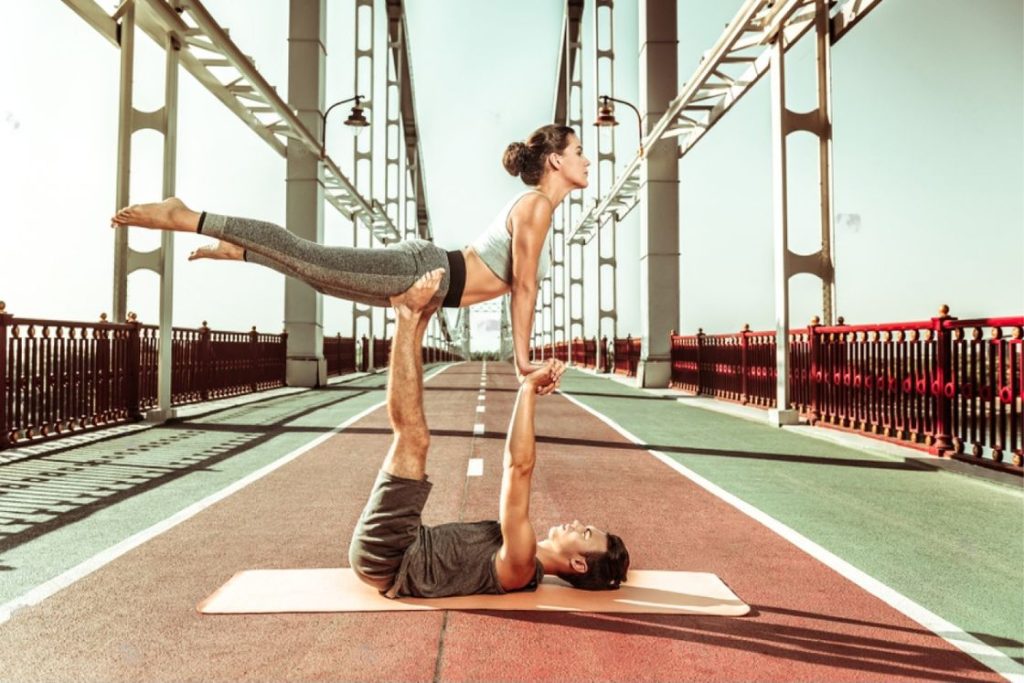 Image: shutterstock
Image: shutterstockThis is another pose that is recommended for beginners as the clasping of hands will give a more stable foundation to the flyer’s plank pose. Also called an Airplane pose, this gives the flyer an opportunity to balance their body and core when ‘flying’
How to Do it?
The base lies firmly on the ground and bends their knees to place their feet on the flyer’s hips. By connecting the hands with the base, the flyer now starts bending forwards, transferring the weight onto the base’s feet.
With the flyer’s and base’s core engaged, the base starts ro straighten their legs and brings them perpendicular to the ground, not leaving the flyer’s hands. The flyer should keep their legs straight so that their body is now parallel to the ground.
5. Folded Leaf Pose
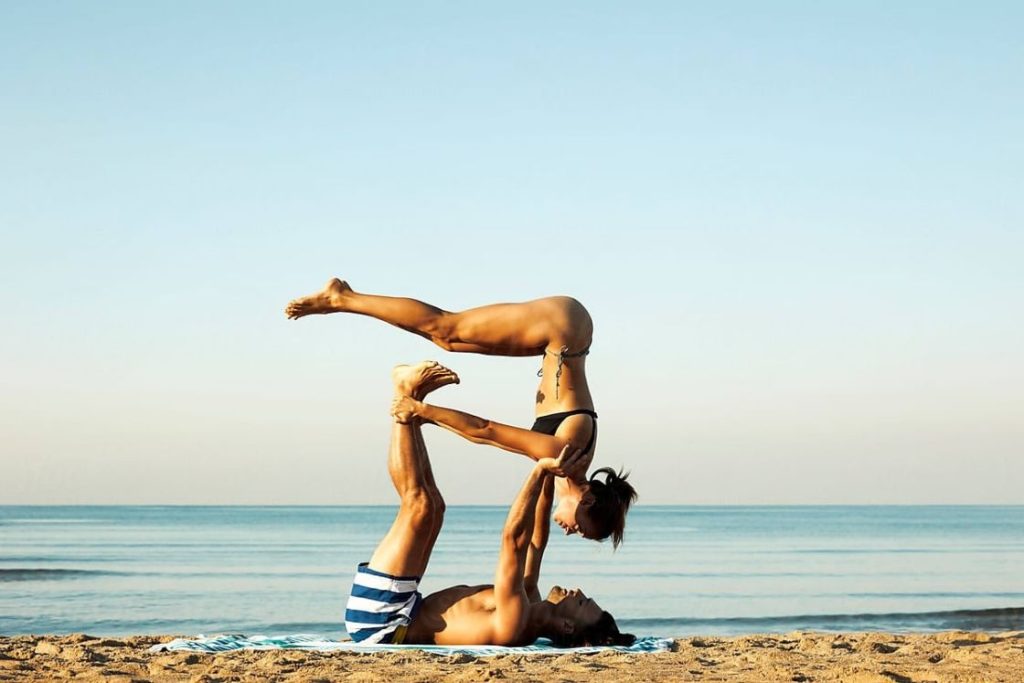 Image:Stocksy
Image:StocksyThis pose is great for releasing stress and tension of the back muscles as well as in the spine. It is one of the therapeutic poses in Acro Yoga and a base for a few intermediate to advanced poses.
How to Do it?
The base lies on his back and pulls up his legs with a slight bend of their knees. The toes should be placed on the hips of the flyer at a 45-degree angle to create a ‘V’ shape.
By engaging the abdomen muscles, the flyer bends forward and ‘hang’ on the base’s legs.
The base and the flyer hold hands for support as the base now extends the legs to make them straight. The flyer’s upper body is now draping the front of the base’s legs and their legs are more or less parallel to the floor.
The spotter usually will be standing behind the flyer to support the hips.
Conclusion
Acro Yoga is a great way to make friends, build your communication, engage with the community and challenge yourself. Some people start getting monotony by performing the same yoga poses and Acro Yoga may just be the right calling for them. It is a fun way to practice yoga all the while reaping the benefits of enhancing your core strength and building your arms and legs muscles.

 KickT
KickT 
